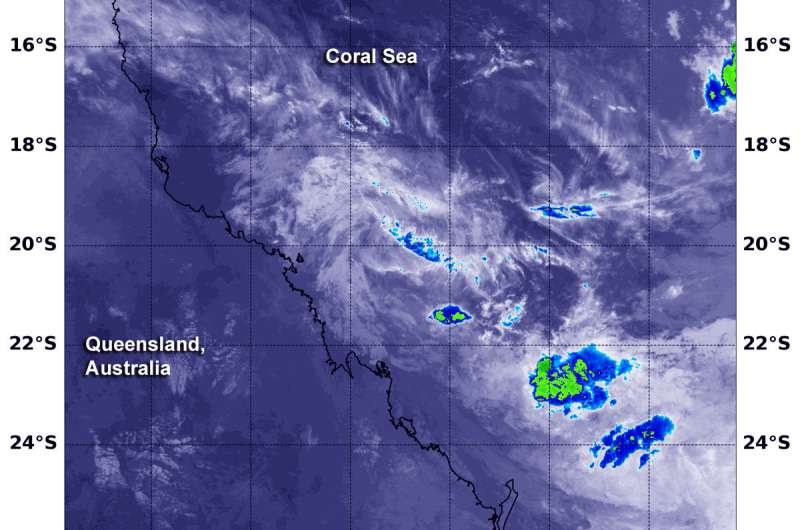NASA finds tiny remnants of Tropical Cyclone Owen

Tropical Cyclone Owen crossed over Queensland Australia's Cape York Peninsula over the weekend of Dec. 15 and 16 and emerged into the Coral Sea off of Queensland's southeastern coast. NASA's Terra satellite provided an infrared image of the remnants and found two very small areas of strong thunderstorms.
The Moderate Resolution Imaging Spectroradiometer or MODIS instrument aboard NASA's Terra satellite captured an infrared image of the remnants of Tropical Cyclone Owen on Dec. 17 at 7:35 a.m. EST (1235 UTC). The image revealed a very small patch of strong thunderstorms where cloud top temperatures were as cold as minus 63 degrees Fahrenheit (minus 53 Celsius).
Infrared data provides temperature information. That small patch of strongest thunderstorms had cloud top temperatures as cold as minus 63 degrees Fahrenheit (minus 53 Celsius). NASA research has shown that cloud tops with temperatures that cold were high in the troposphere and have the ability to generate heavy rain.
Owen's remnants are expected to dissipate within a day or two.
Provided by NASA's Goddard Space Flight Center




















